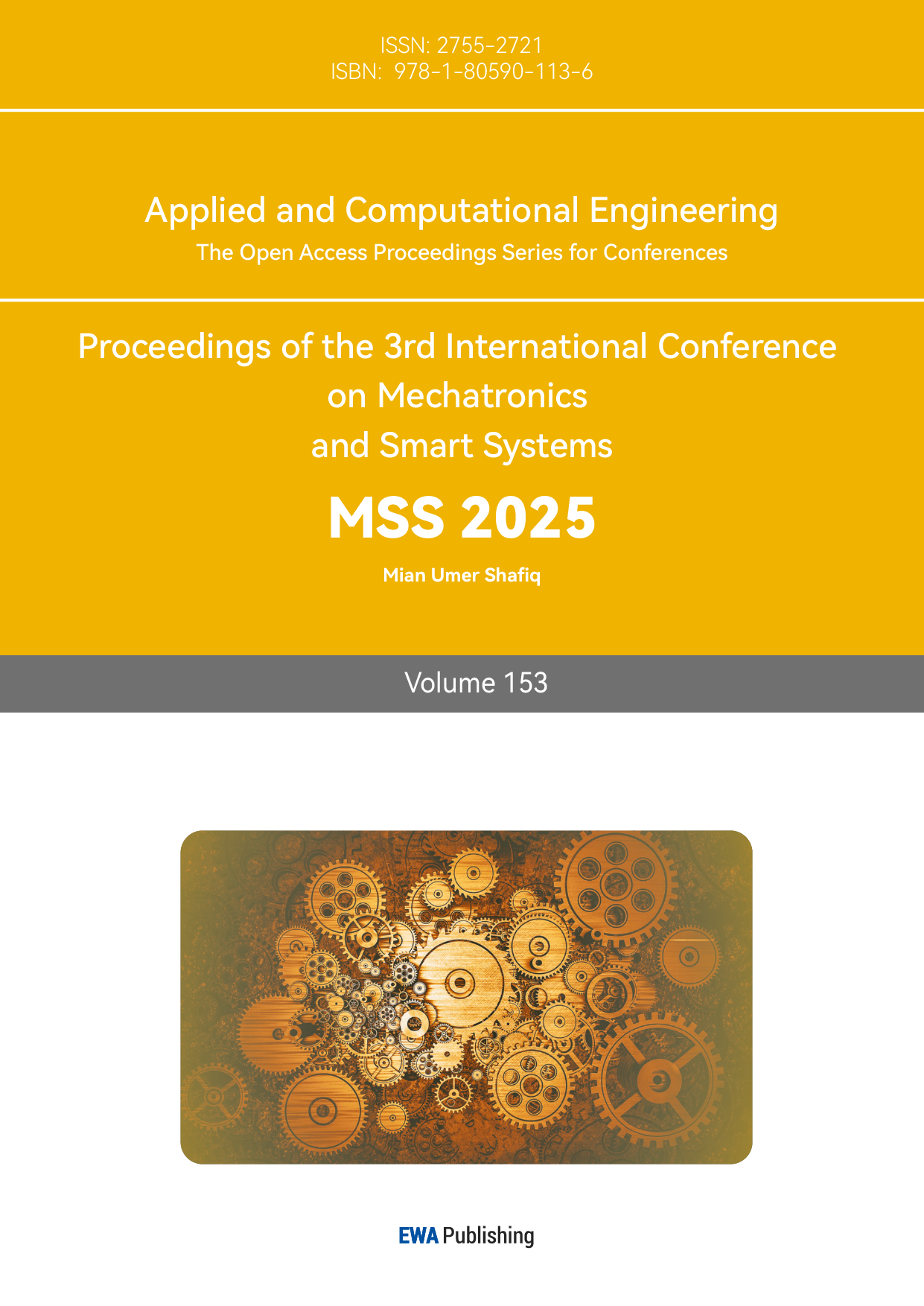1. Introduction
When subjected to external forces, conventional materials typically exhibit a positive Poisson's ratio, meaning that they expand laterally when stretched and contract laterally when compressed. In contrast, auxetic metamaterials deform in the opposite manner: they contract laterally under tension and expand laterally under compression. This unusual deformation behavior is primarily attributed to specially designed microstructures within the material, such as re-entrant honeycombs, chiral units, and bowtie (double-arrowhead) structures. These geometric configurations at the microscale can result in macroscopic auxetic effects, enabling exceptional energy absorption, vibration damping, and mechanical strength. As the automotive industry increasingly emphasizes safety, comfort, and environmental sustainability, auxetic materials—with their advantages of lightweight and high strength—have become a focal point of research. Specifically, these materials show broad application potential in automotive energy-absorbing structures, suspension systems, tires, and smart design elements. This paper aims to provide a comprehensive review of current research on auxetic materials in the automotive sector, analyze their mechanical performance and application prospects, assess the limitations of existing research methods, and explore potential future development paths.
2. Basic concepts of metastructures
The auxetic effect refers to a material behavior in which it contracts laterally when stretched and expands laterally when compressed. This counterintuitive mechanical property is mainly due to the internal microstructure of the material. Common structural types are illustrated in Figure 1.
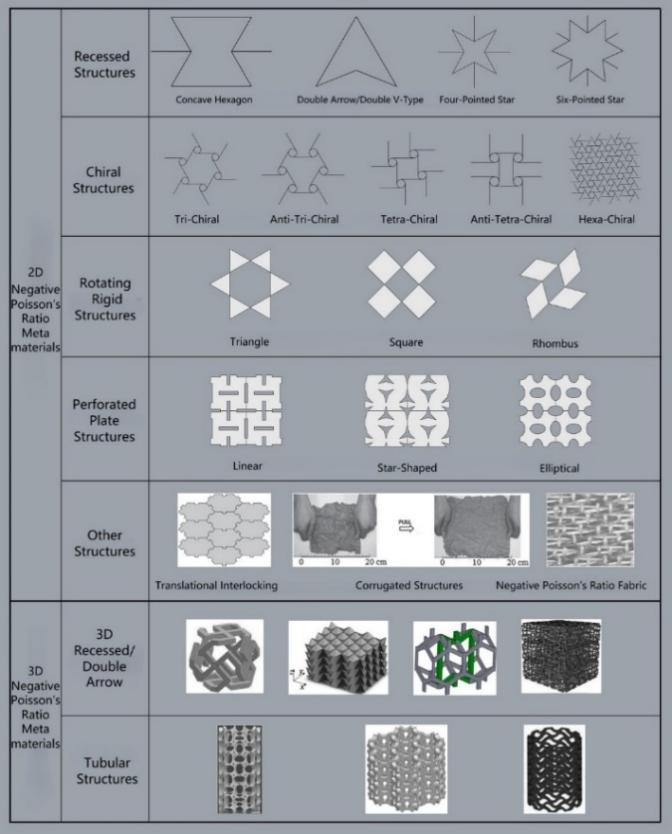
Figure 1: Common auxetic structures [1]
Several key auxetic structures are briefly introduced below:
Re-entrant Honeycombs: These are widely used in engineering and include two-dimensional and three-dimensional configurations such as re-entrant triangles, honeycombs, and star-shaped geometries. The auxetic behavior of re-entrant structures is influenced by the inward-facing angles; however, not all such shapes yield auxetic effects. A pronounced auxetic effect only emerges when the degree of angular folding is sufficiently high [2].
Chiral Structures: Another extensively used class of auxetic design, first proposed by Lakes [3,4], involves hexagonal microchiral structures. The term "chiral" originally described objects whose left and right sides are not mirror-symmetrical. Chiral structures can be categorized based on the number of tangent beams connected to a node, such as three-tangent-beam, four-tangent-beam, and six-tangent-beam chiral structures, as shown in Figure 2.
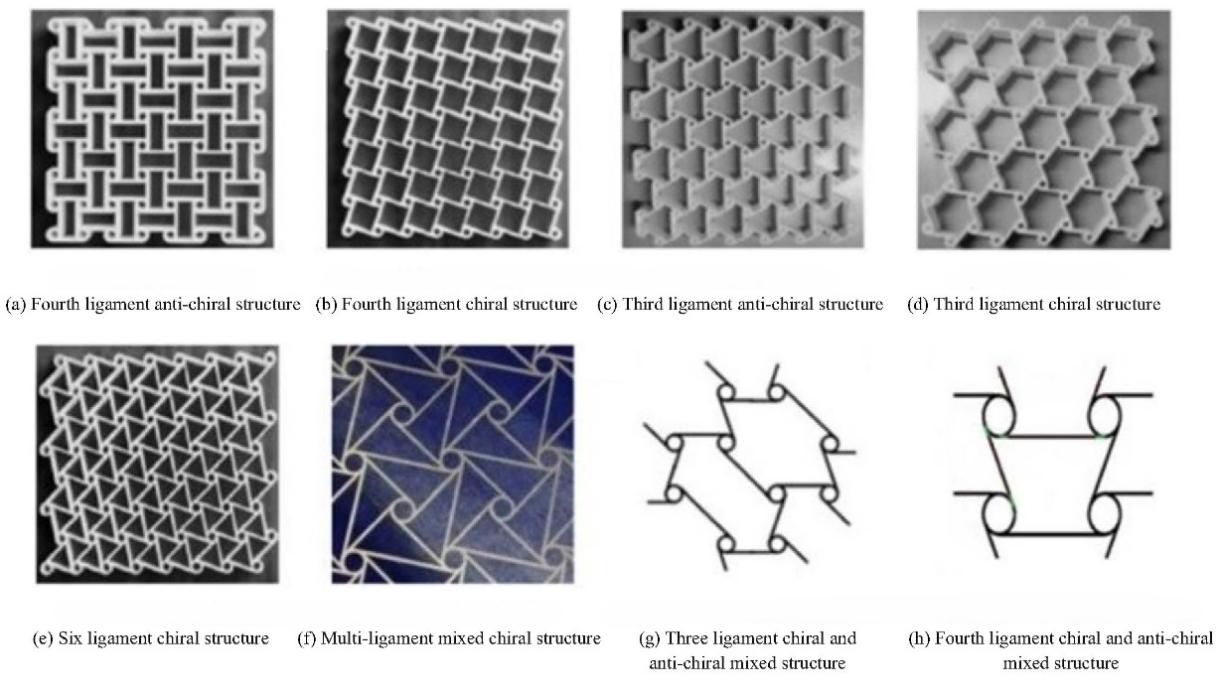
Figure 2: Chiral structural configurations [5]
Interlocking Polygons: These structures consist of regularly arranged polygons connected in a defined pattern. The principle involves the interaction between adjacent units via interlocking points. When stretched, node movement induces sliding among the connected components, causing overall expansion and thus producing the auxetic effect.
Rotating Polygons: This type of structure relies on hinged connections between nodes, and its Poisson's ratio can be either positive or negative depending on the assembly method [6,7]. The mechanism involves rigid polygons rotating around vertices under force, causing the structure to expand (or contract) as a whole. This design can also be extended to three-dimensional structures.
3. Applications of auxetic structures in the automotive industry
Auxetic structures, owing to their unique microstructural characteristics, are widely applied in the automotive industry. These materials can reduce vibration transmission and suppress noise propagation while effectively absorbing impact energy through deformation, making them ideal energy-absorbing materials. Through optimized design, auxetic materials can achieve high strength while significantly reducing self-weight, aligning with the lightweight requirements of modern automotive design. This section analyzes the application of auxetic structures from four key perspectives: energy-absorbing structures, vibration and noise reduction, lightweight design, and future intelligent applications.
3.1. Energy-absorbing structures
In automotive crash safety design, energy-absorbing structures play a critical role in protecting occupant safety. Traditional energy-absorbing materials such as aluminum alloys or high-strength steels rely on plastic deformation to absorb energy during collisions. In contrast, auxetic structures absorb impact energy more efficiently through geometric deformation.
3.1.1. Crash energy absorption boxes
Re-entrant honeycomb structures based on auxetic designs can absorb impact energy through internal geometric deformation during compression, significantly reducing peak acceleration during collisions. Research has shown that, compared to conventional materials, these novel energy-absorbing boxes can reduce transmitted impact forces by approximately 20% to 30% [5].
As shown in Figure 3, to overcome the limitations of traditional energy-absorbing boxes, Zou Songchun [8] introduced auxetic structures into traditional boxes to leverage their lighter weight, superior energy absorption, and excellent cushioning performance. The goal was to enhance the crashworthiness of energy-absorbing boxes and reduce occupant injuries during collisions. The study found that crash boxes filled with three-dimensional auxetic unit cells achieved greater total energy absorption, higher average crash force, and smaller compression displacements, all of which contribute to enhanced impact resistance.
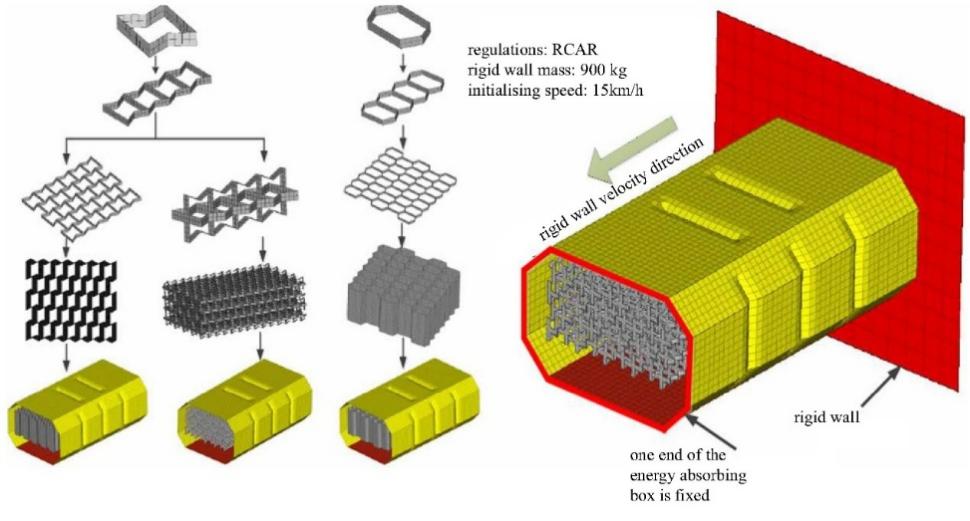
Figure 3: Design of a crash box based on three-dimensional auxetic structures
Using the unique deformation behavior of bowtie-shaped unit cells, Ma et al. [9] developed a novel auxetic crash box and established a parametric optimization model to enhance structural energy absorption efficiency. They validated the accuracy of the model by comparing it with conventional finite element models. Further comparisons of energy absorption performance between the auxetic crash box, traditional crash boxes, and aluminum foam-filled boxes demonstrated the advantages of auxetic designs. Additionally, a multi-objective optimization model was proposed to further refine the structure and energy-absorbing capabilities of the crash box.
3.1.2. B-pillar energy-absorbing design
As a primary load-bearing component in side-impact collisions, the energy-absorbing performance of the B-pillar is critical for preserving the survival space of vehicle occupants. By integrating auxetic structures, the energy absorption capacity of the B-pillar can be increased by 15%–25% while simultaneously reducing structural weight.
3.2. Vibration and noise reduction
Vehicles generate significant vibration and noise during operation, which directly affects driving comfort. The unique structural features of auxetic materials allow them to exhibit excellent suppression of vibration and acoustic wave propagation. The performance of automotive suspension systems under external impact loads is vital for vehicle handling stability, ride comfort, and safety. Suspension bump stops, typically made from polyurethane, serve functions such as limiting movement, cushioning impacts, damping, and acting as auxiliary springs. Design requirements for these components include achieving both appropriate stiffness in the initial displacement region and smooth transitions along the load–displacement curve. However, conventional bump stops often struggle with premature stress transitions and rapid stress increases beyond the ideal cushioning range, thereby limiting ride quality improvements.
As shown in Figure 4, Wang Yuanlong et al. [10] proposed a novel suspension bump stop design based on a bowtie-shaped auxetic structure. The optimization objectives were to match the target load–displacement curve and reduce peak vehicle acceleration over representative road obstacles. The results showed that the optimized design enhanced ride smoothness on uneven road surfaces and significantly reduced vehicle acceleration peaks, thereby improving performance under complex driving conditions.
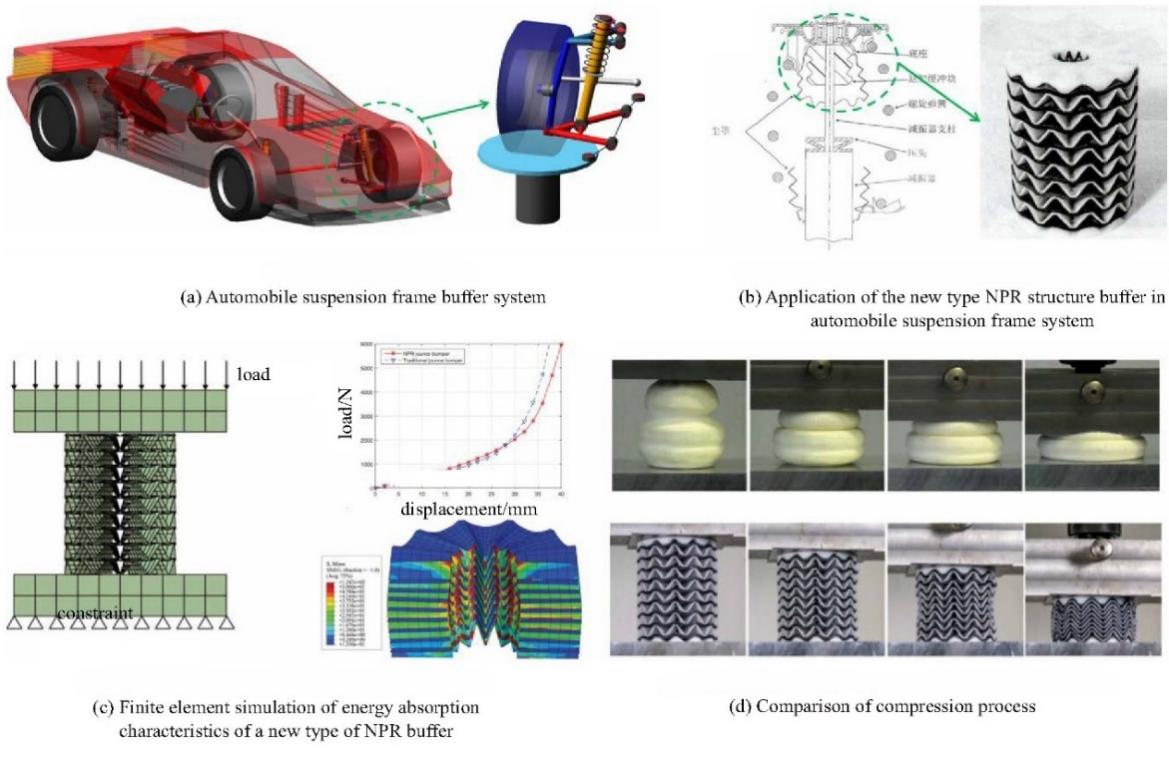
Figure 4: Novel suspension buffer structure based on bowtie-shaped auxetic design [10]
3.3. Lightweight design
Auxetic materials have also been applied in the design of non-pneumatic tires, offering the dual benefits of reduced weight and improved handling while maintaining load-bearing capacity. This innovation introduces a new concept for vehicles ranging from bicycles and passenger cars to trucks. As early as the 1920s, American inventor James Martin filed patents for non-pneumatic tires. One of the most notable developments in this area came from Michelin’s North America Research Center, which developed the TWEEL non-pneumatic radial tire in 1997 and released a prototype in 2005, as shown in Figure 5(a). In recent years, with the advancement of non-pneumatic tire concepts, engineers have proposed utilizing the compressive contraction behavior of auxetic structures in tire design. This allows for adaptive and active control under different road and driving conditions. As shown in Figure 5(b), in 2014, Professor Ma Zhengdong from the Department of Mechanical Engineering at the University of Michigan, in collaboration with BAIC Group, developed a new type of explosion-proof, non-pneumatic tire based on auxetic principles. This design helps ensure optimal driving performance at all times [11,12].
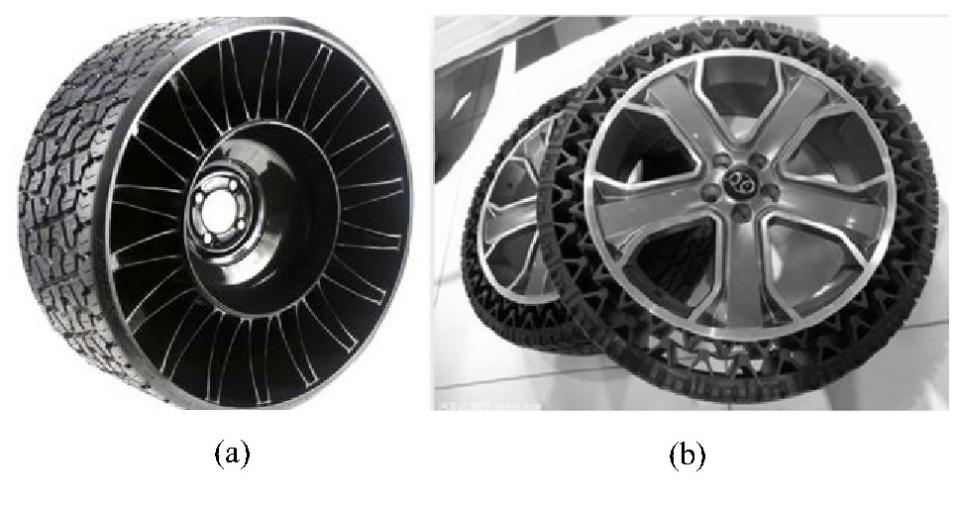
Figure 5: Tire designs based on auxetic structures [11]
4. Research conclusions
4.1. Current research progress
In recent years, auxetic structures have attracted significant research interest due to their unique mechanical properties and wide range of potential applications. In terms of structural design, researchers have developed various geometries such as re-entrant honeycombs, chiral units, and three-dimensional lattice structures, expanding the design space. Through topology optimization, a balance has been achieved between mechanical performance, energy absorption, and weight reduction—especially evident in optimized energy-absorbing designs for automotive applications. In terms of manufacturing technology, 3D printing has enabled the fabrication of complex structures and, when combined with multi-material systems, has allowed for gradient distribution of material properties, further enhancing structural performance. In engineering applications, auxetic materials have been successfully utilized in the automotive industry for components such as crash boxes, B-pillars, and suspension systems, significantly improving crash safety and vibration damping. Beyond automotive applications, auxetic materials are also being explored in aerospace, medical devices, and smart materials.
4.2. Existing limitations and challenges
Despite their promise, auxetic materials face several challenges, including limitations in manufacturing techniques, the efficiency of optimization algorithms, insufficient experimental validation, and restricted application domains. Currently, large-scale production is hindered by high-cost technologies, and the material stability under complex geometric configurations and dynamic loading remains difficult to guarantee. Existing optimization algorithms suffer from high computational complexity and limited precision and adaptability. Experimental validation is primarily focused on static or quasi-dynamic conditions, lacking comprehensive studies under complex working conditions and over long-term use. Furthermore, current applications of auxetic materials remain largely within energy absorption and vibration damping, while their potential for intelligent applications remains underexplored. Most existing studies are still at the theoretical stage, lacking demonstrative engineering practices.
5. Future intelligent applications and research directions
Auxetic materials offer broad prospects in the field of automotive intelligence. When integrated with smart materials and sensor technologies, they can significantly enhance design innovation. For instance, smart tires embedded with sensors can monitor road conditions in real-time and dynamically adjust their performance, while rear-view mirrors combined with shape memory materials can automatically optimize the driver’s field of vision.
Future research should focus on the development of low-cost, scalable manufacturing technologies, multi-material composites, and highly efficient optimization algorithms to balance lightweight design, energy absorption capacity, and cost-effectiveness. Potential applications can be expanded to components such as battery packs and seat frames, where embedded sensors could enable real-time monitoring and adaptive response. Performance evaluation and standardization are also critical. Systematic research into long-term reliability and the development of application standards are needed to lay a foundation for the industrial-scale adoption of auxetic materials. Auxetic structures are not limited to the automotive sector—they can be extended to aerospace, smart devices, and biomedical fields. By further exploring their intelligent and multifunctional applications, the full potential of auxetic materials can be realized, offering new directions for future technological innovation.
References
[1]. Jiang Weizhong, Zhang Yi, Zhu Yilin, et al. Progress and prospect of metamaterials with negative functional Poisson ratio [J]. Chinese Journal of applied Mechanics,1-23[2025-03-09].
[2]. Roderic Lakes,Foam Structures with a Negative Poisson's Ratio.Science235,1038-1040(1987).
[3]. D. Prall, R.S. Lakes,Properties of a chiral honeycomb with a poisson's ratio of — 1,International Journal of Mechanical Sciences, 1997, 305-314.
[4]. Chen Luo, Chuan Zhen Han, Xiang Yu Zhang, Xue Gang Zhang, Xin Ren, Yi Min Xie, Design, manufacturing and applications of auxetic tubular structures: A review, Thin-Walled Structures, 2021.107682.
[5]. Wu Wenwang, Xiao Dengbao, Meng Jiaxu, et al. Mechanical design and impact resistance of negative Poisson's ratio structure and its application and prospect in vehicle engineering [J]. Chinese Journal of Mechanics,2021,53(03):611-638.
[6]. Jie Gao, Huipeng Xue, Liang Gao, Zhen Luo,Topology optimization for auxetic metamaterials based on isogeometric analysis,Computer Methods in Applied Mechanics and Engineering,2019, 211-236.
[7]. Sarker, I.H. AI-Based Modeling: Techniques, Applications and Research Issues Towards Automation, Intelligent and Smart Systems. SN COMPUT. SCI. 3, 158 (2022).
[8]. Zou Songchun. Optimization design of crashworthiness of body parts with negative Poisson ratio structure [D]. Nanjing University of Aeronautics and Astronautics, 2019.
[9]. Ma ZD, Bian H, Sun C, et al.Functionally-graded NPR NegativePoisson′sRatio material for a blast-protective deflector// Proceedings of the 2010 NDIA Ground Vehicle Systems Engineering and Technology Symposium Modeling & Simulation, Testing and Validation Mini-Symposium, Dearborn, MI, USA, 17-19 August 2010.
[10]. Wang Yuanlong. Research on mechanical properties and optimal design of buffer blocks for automotive suspension with negative Poisson ratio structure. [D]. Nanjing University of Science and Technology, 2016.
[11]. He Feng, Liang Yiming, Qin Hai, et al. Engineering application status and prospect of negative Poisson's ratio structure [J]. Protective engineering,2024,46(01):68-78.
[12]. Li Dongcheng. Crashworthiness analysis and optimization design of vehicle energy absorbing components based on negative Poisson ratio structure [D]. Chang 'an University,2023.
Cite this article
Huang,S. (2025). Vibration and Shock: Research and Progress on Auxetic Metamaterials in the Automotive Field. Applied and Computational Engineering,153,43-49.
Data availability
The datasets used and/or analyzed during the current study will be available from the authors upon reasonable request.
Disclaimer/Publisher's Note
The statements, opinions and data contained in all publications are solely those of the individual author(s) and contributor(s) and not of EWA Publishing and/or the editor(s). EWA Publishing and/or the editor(s) disclaim responsibility for any injury to people or property resulting from any ideas, methods, instructions or products referred to in the content.
About volume
Volume title: Proceedings of the 3rd International Conference on Mechatronics and Smart Systems
© 2024 by the author(s). Licensee EWA Publishing, Oxford, UK. This article is an open access article distributed under the terms and
conditions of the Creative Commons Attribution (CC BY) license. Authors who
publish this series agree to the following terms:
1. Authors retain copyright and grant the series right of first publication with the work simultaneously licensed under a Creative Commons
Attribution License that allows others to share the work with an acknowledgment of the work's authorship and initial publication in this
series.
2. Authors are able to enter into separate, additional contractual arrangements for the non-exclusive distribution of the series's published
version of the work (e.g., post it to an institutional repository or publish it in a book), with an acknowledgment of its initial
publication in this series.
3. Authors are permitted and encouraged to post their work online (e.g., in institutional repositories or on their website) prior to and
during the submission process, as it can lead to productive exchanges, as well as earlier and greater citation of published work (See
Open access policy for details).
References
[1]. Jiang Weizhong, Zhang Yi, Zhu Yilin, et al. Progress and prospect of metamaterials with negative functional Poisson ratio [J]. Chinese Journal of applied Mechanics,1-23[2025-03-09].
[2]. Roderic Lakes,Foam Structures with a Negative Poisson's Ratio.Science235,1038-1040(1987).
[3]. D. Prall, R.S. Lakes,Properties of a chiral honeycomb with a poisson's ratio of — 1,International Journal of Mechanical Sciences, 1997, 305-314.
[4]. Chen Luo, Chuan Zhen Han, Xiang Yu Zhang, Xue Gang Zhang, Xin Ren, Yi Min Xie, Design, manufacturing and applications of auxetic tubular structures: A review, Thin-Walled Structures, 2021.107682.
[5]. Wu Wenwang, Xiao Dengbao, Meng Jiaxu, et al. Mechanical design and impact resistance of negative Poisson's ratio structure and its application and prospect in vehicle engineering [J]. Chinese Journal of Mechanics,2021,53(03):611-638.
[6]. Jie Gao, Huipeng Xue, Liang Gao, Zhen Luo,Topology optimization for auxetic metamaterials based on isogeometric analysis,Computer Methods in Applied Mechanics and Engineering,2019, 211-236.
[7]. Sarker, I.H. AI-Based Modeling: Techniques, Applications and Research Issues Towards Automation, Intelligent and Smart Systems. SN COMPUT. SCI. 3, 158 (2022).
[8]. Zou Songchun. Optimization design of crashworthiness of body parts with negative Poisson ratio structure [D]. Nanjing University of Aeronautics and Astronautics, 2019.
[9]. Ma ZD, Bian H, Sun C, et al.Functionally-graded NPR NegativePoisson′sRatio material for a blast-protective deflector// Proceedings of the 2010 NDIA Ground Vehicle Systems Engineering and Technology Symposium Modeling & Simulation, Testing and Validation Mini-Symposium, Dearborn, MI, USA, 17-19 August 2010.
[10]. Wang Yuanlong. Research on mechanical properties and optimal design of buffer blocks for automotive suspension with negative Poisson ratio structure. [D]. Nanjing University of Science and Technology, 2016.
[11]. He Feng, Liang Yiming, Qin Hai, et al. Engineering application status and prospect of negative Poisson's ratio structure [J]. Protective engineering,2024,46(01):68-78.
[12]. Li Dongcheng. Crashworthiness analysis and optimization design of vehicle energy absorbing components based on negative Poisson ratio structure [D]. Chang 'an University,2023.





